 Private aircraft safety reviews after a known model crash are an important part of the emptylegs.net client safety commitment. The recent incident over Washington, D.C., where a pair of U.S. F-16 fighter jets generated a resounding sonic boom while attempting, unsuccessfully, to establish contact with an unresponsive pilot of a privately-owned Cessna jet that had strayed into restricted airspace on Sunday triggers the review. The Cessna subsequently descended and crashed in a rural area of Virginia. The reason behind the Cessna’s presence in Washington remains unclear, but the owner of the aircraft suggested that a possible loss of cabin pressure could have rendered the pilot and passengers unconscious, potentially leading to the autopilot assuming control. Promptly dispatched from Joint Base Andrews, the F-16s were deployed to intercept the aircraft. Defense officials have clarified that the fighter jets were not responsible for the crash of the Cessna.
Private aircraft safety reviews after a known model crash are an important part of the emptylegs.net client safety commitment. The recent incident over Washington, D.C., where a pair of U.S. F-16 fighter jets generated a resounding sonic boom while attempting, unsuccessfully, to establish contact with an unresponsive pilot of a privately-owned Cessna jet that had strayed into restricted airspace on Sunday triggers the review. The Cessna subsequently descended and crashed in a rural area of Virginia. The reason behind the Cessna’s presence in Washington remains unclear, but the owner of the aircraft suggested that a possible loss of cabin pressure could have rendered the pilot and passengers unconscious, potentially leading to the autopilot assuming control. Promptly dispatched from Joint Base Andrews, the F-16s were deployed to intercept the aircraft. Defense officials have clarified that the fighter jets were not responsible for the crash of the Cessna.
Identified as a Model 560 Citation V, the Cessna met with tragedy near the George Washington National Forest close to Montebello, Virginia, around 3:23 p.m. Regrettably, there were no survivors discovered at the crash site. According to The Washington Post, John Rumpel, a 75-year-old and the proprietor of Encore Motors of Melbourne, shared that his “entire family” was aboard the plane during the crash. He mentioned that his daughter, a two-year-old granddaughter, her nanny, and a pilot were among the individuals on board.
Mr. Rumpel identified the pilot as Jeff Hefner. Records show he had an airline pilot rating that qualified him to fly Boeing 737 jets, among other aircraft, and had a top-level medical certificate as recently as October. Authorities have not released the name of the nanny. Dan Newlin, an attorney in Florida, said in an email Monday that Hefner had flown for him in the past. Newlin described the pilot as a “highly accomplished and skilled Aviator” who was survived by his wife and three kids. Our heartfelt condolences go out to the family and friends of the departed souls.
Flight Data Approximate Timeline by Flightradar24 and FlightAware:
1:13 p.m.: Departure – The Cessna takes off from Elizabethton Municipal Airport in Elizabethton, Tennessee. Its intended destination is Long Island MacArthur Airport in New York.
2:29 p.m.: Overflight – The Cessna flies over MacArthur Airport without landing and alters its course southward, commencing a journey towards Washington.
3:05 p.m.: Intercept – As the Cessna approaches the restricted airspace of Washington, two F-16 jets are dispatched from Andrews Air Force Base to intercept the aircraft.
3:23 p.m.: Rapid Descent – Flight tracking data indicates that the Cessna enters a steep spiraling descent, descending at a rate exceeding 30,000 feet per minute, ultimately leading to its crash in the St. Mary’s Wilderness area.
4 p.m.: Crash Notification – The Virginia State Police receive notification of the crash. It takes nearly four hours for rescuers to reach the crash site on foot. Unfortunately, no survivors are located.
The information provided by Flightradar24 and FlightAware helps piece together the sequence of events leading to the tragic crash of the Cessna in the St. Mary’s Wilderness.
The Cessna Citation 560 V Model
Refers to a family of business jets manufactured by Cessna Aircraft Company, a subsidiary of Textron Aviation. The specific model within this family is often referred to as the Cessna Citation V or the Cessna Citation Ultra.
The Cessna Citation 560 series was developed as an improved version of the earlier Citation II and Citation S/II models. It was designed to provide enhanced performance, increased range, and improved avionics systems. The model first entered service in 1988 and remained in production until 1994.
Here are some key features and specifications of the Cessna Citation 560:
- Performance: The Citation 560 is powered by two Pratt & Whitney Canada JT15D-5D engines, each producing 2,500 pounds of thrust. It has a maximum cruise speed of approximately 440 knots (506 mph) and a maximum range of around 1,900 nautical miles (2,185 miles) with four passengers and full fuel.
- Cabin and Seating: The cabin of the Citation 560 is typically configured to accommodate up to eight passengers, although it can be configured for a maximum of nine. The cabin features a comfortable and well-appointed interior, with seating arranged in a club configuration for optimal passenger comfort. There is also a small refreshment center and a private lavatory onboard.
- Avionics: The Citation 560 incorporates advanced avionics systems for enhanced situational awareness and navigation. The cockpit is equipped with a digital EFIS (Electronic Flight Instrument System) and a dual flight management system. It also includes weather radar, traffic collision avoidance system (TCAS), and other modern avionics equipment.
- Upgrades: In 1994, Cessna introduced an upgraded version of the Citation 560 called the Citation Ultra. The Ultra featured improved engines, extended range, and increased payload capacity. It also included a redesigned interior with upgraded materials and improved soundproofing.
Overall, the Cessna Citation 560 model, including the Citation V and Citation Ultra, is well-regarded for its reliable performance, comfortable cabin, and versatility. It has been widely utilized by corporate flight departments, charter operators, and individual owners for business and personal travel.
Our Safety Review Of Preliminary Data (purely conjecture)
Obviously, there will be an extensive review conducted by both the NTSB and the FAA regarding the crash. It can take over a year before seeing the final report, but some early data can be reviewed now to ascertain any concerns flying in a Cessna 560 V. We have three categories for aircraft we consider for clients private jet travels. Green Level is a complete passing grade with few known issues and/or crashes. Yellow Level is designated for an aircraft we now consider under review as we will grade the 560 Vs in future quotes. Basically, if we have an empty leg in this model plane, we will let the clients know upfront about the crash until we see the final report. From what we can see the pilot had ample training in larger commercial jets and has flown this model for quite sometime. We typically rule out pilot error here based on his background and training. Red Level (widespread mechanical concerns) aircraft are never quoted.
Researching the Cessna 560 V we find 71 overall incidents with the variations of this model designation of which 30 were specifically Cessna Citation 560 Vs. This data has been collected since 1995 and until now only 6 resulted in fatalities. Upon review of the events with fatalities, all were pilot and/or crew errors. One of the crashes was on January 9th, 2021 in Pine Grove Oregon where it seems that the pilot did not have enough Cessna 560 training to be single pilot exempt, and he was the only soul lost. Then back on December 18th, 2018 four souls were lost in a 560 Vs with probable cause listed as “the pilot’s loss of airplane control due to spatial disorientation during initial climb in instrument meteorological conditions.”
This most recent crash’s early review is pointing towards the possible cause as a loss of cabin pressure. The FAA lost contact with the pilot only 15 minutes into the flight. Based on the FlightAware data we can see the plane never reached its planned altitude of 39,000 feet. Roughly at 33,000 feet it maintained that altitude at a high rate of speed over 500mph under autopilot. The Autopilot system seemed to be active and helped the craft reach its destination in Islip, New York. At that point it made a sharp 180 turn and headed back towards its departure point. Although this is consistent with only the most modern autopilot technology, it seems the plane was on autopilot since reaching pressurization, and some mishap caused it to lose the required cabin oxygen levels which may have caused pilot and passengers to get hypoxia and pass out.
Jet Pilot Asphyxiation
A term used to describe a potential risk faced by pilots in high-altitude flight. When an aircraft operates at high altitudes, where the air is thin and lacks oxygen, pilots need to rely on supplemental oxygen systems to breathe properly. If these systems fail or if there is a loss of pressurization, it can lead to a condition known as hypoxia, which is the deficiency of oxygen in the body’s tissues.
Hypoxia can affect pilots in various ways, depending on the severity and duration of oxygen deprivation. Here are some potential effects:
- Impaired judgment and decision-making: Hypoxia can impair cognitive function, leading to poor decision-making, difficulty concentrating, and confusion. Pilots may have difficulty understanding or responding to instructions and may exhibit slow reaction times.
- Decreased vision and coordination: Hypoxia can cause visual disturbances, such as reduced peripheral vision, decreased night vision, and impaired depth perception. It can also affect fine motor skills and hand-eye coordination, making it challenging to perform precise tasks.
- Altered sensations: Hypoxia can lead to a sense of euphoria or lightheadedness, which may cause pilots to underestimate the severity of the situation. They may feel a false sense of well-being or become apathetic, making it harder to recognize and respond to the emergency appropriately.
- Loss of consciousness: In severe cases of hypoxia, pilots may lose consciousness. This can occur if they are exposed to a prolonged lack of oxygen or if the oxygen deprivation is sudden and severe.
To mitigate the risk of hypoxia, pilots are trained to recognize the symptoms and take immediate action. They regularly use supplemental oxygen systems at high altitudes and undergo altitude chamber training to experience the effects of hypoxia in a controlled environment. Additionally, aircraft are equipped with various safety measures to maintain pressurization and provide backup oxygen supplies in case of emergencies. It’s important to note that the risk of jet pilot asphyxiation is relatively low in modern aviation due to the emphasis on safety protocols, advancements in aircraft technology, and rigorous pilot training.
In Summary
All of this article’s assumptions should be approached with caution as they are purely based on conjecture rather than verifiable evidence or factual support from a completed FAA findings report. We merely are reviewing the sited possible cause and determining to place this craft for our purposes at a yellow safety warning. If the findings were to point to specific non pilot or crew error determinations, and find mechanical concerns affecting many of the same model aircraft, we would escalate this model jet to a Red Level status and no longer offer quotes containing the same model of aircraft nor would we allow it to be substituted as an alternative craft for a mechanical issue with the original contracted plane.
We are 100% committed to the safety of the private flyers that choose Emptylegs.net for their private air charter needs. We look at any crash involving a private charter aircraft model with great scrutiny for all future considerations. Please pray for the souls lost in these events and do everything possible to support the safety and comfort in all air travel. Remember to Be Social, Fly Private!
Sign Up Today!
Follow us on Instagram
Follow us on Facebook
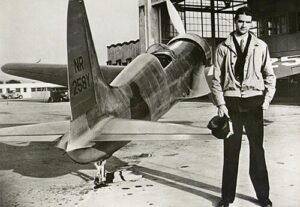

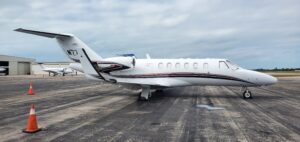 Adding Value to Jet Travel is for those who lead fast-paced lives and have a constant need for private air travel. Owning a jet, having a flight card, or investing in fractional ownership might seem like the ultimate solutions, and offer convenience and flexibility, there’s an unsung hero in the world of aviation that can elevate your private travel experience to new heights: the dedicated air charter broker. In this blog post, we’ll explore why even if you have your own jet, a flight card, or fractional ownership, having a dedicated air charter broker still makes sense and is an added benefit. We’ll also highlight how EmptyLegs.net fulfills this crucial capacity.
Adding Value to Jet Travel is for those who lead fast-paced lives and have a constant need for private air travel. Owning a jet, having a flight card, or investing in fractional ownership might seem like the ultimate solutions, and offer convenience and flexibility, there’s an unsung hero in the world of aviation that can elevate your private travel experience to new heights: the dedicated air charter broker. In this blog post, we’ll explore why even if you have your own jet, a flight card, or fractional ownership, having a dedicated air charter broker still makes sense and is an added benefit. We’ll also highlight how EmptyLegs.net fulfills this crucial capacity.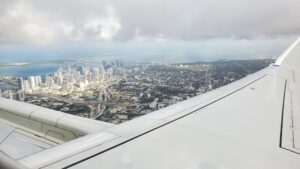 Time and Cost Effective Jet Travel
Time and Cost Effective Jet Travel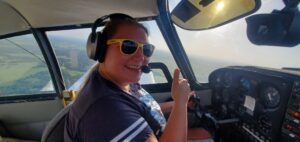 The demand for new pilots in the private aviation business world has really changed. Once, the skies were vast and empty, with only a few pioneers daring to take flight. But with time, technology advanced, and the dream of soaring through the clouds became a reality for many. In the United States, private aviation had experienced a meteoric rise, and with it came an unprecedented need for new pilots to navigate the ever-expanding skies. The private aviation business world was flourishing, driven by the desires of high-profile executives, celebrities, and discerning travelers who sought unparalleled convenience, luxury, and efficiency. The advantages of flying private were evident, as it offered personalized flight schedules, direct routes to remote destinations, and the avoidance of the often chaotic commercial airport experience. However, the industry found itself at a critical juncture recently. A shortage of experienced pilots began to loom on the horizon, casting a shadow over the thriving enterprise. The soaring demand for private aviation services outpaced the number of skilled pilots available, leaving business jet operators grappling with the challenge of satisfying their clients’ needs.
The demand for new pilots in the private aviation business world has really changed. Once, the skies were vast and empty, with only a few pioneers daring to take flight. But with time, technology advanced, and the dream of soaring through the clouds became a reality for many. In the United States, private aviation had experienced a meteoric rise, and with it came an unprecedented need for new pilots to navigate the ever-expanding skies. The private aviation business world was flourishing, driven by the desires of high-profile executives, celebrities, and discerning travelers who sought unparalleled convenience, luxury, and efficiency. The advantages of flying private were evident, as it offered personalized flight schedules, direct routes to remote destinations, and the avoidance of the often chaotic commercial airport experience. However, the industry found itself at a critical juncture recently. A shortage of experienced pilots began to loom on the horizon, casting a shadow over the thriving enterprise. The soaring demand for private aviation services outpaced the number of skilled pilots available, leaving business jet operators grappling with the challenge of satisfying their clients’ needs.

 What is the meaning of Empty Legs? Empty leg flights refer to one-way private jet flights where the aircraft is returning to its base or repositioning without any passengers on board. These flights become available when a private jet is booked for a one-way trip, and the aircraft needs to return to its original location or move to another location for its next scheduled flight.
What is the meaning of Empty Legs? Empty leg flights refer to one-way private jet flights where the aircraft is returning to its base or repositioning without any passengers on board. These flights become available when a private jet is booked for a one-way trip, and the aircraft needs to return to its original location or move to another location for its next scheduled flight. Private aircraft safety reviews after a known model crash are an important part of the emptylegs.net client safety commitment. The recent incident over Washington, D.C., where a pair of U.S. F-16 fighter jets generated a resounding sonic boom while attempting, unsuccessfully, to establish contact with an unresponsive pilot of a privately-owned Cessna jet that had strayed into restricted airspace on Sunday triggers the review. The Cessna subsequently descended and crashed in a rural area of Virginia. The reason behind the Cessna’s presence in Washington remains unclear, but the owner of the aircraft suggested that a possible loss of cabin pressure could have rendered the pilot and passengers unconscious, potentially leading to the autopilot assuming control. Promptly dispatched from Joint Base Andrews, the F-16s were deployed to intercept the aircraft. Defense officials have clarified that the fighter jets were not responsible for the crash of the Cessna.
Private aircraft safety reviews after a known model crash are an important part of the emptylegs.net client safety commitment. The recent incident over Washington, D.C., where a pair of U.S. F-16 fighter jets generated a resounding sonic boom while attempting, unsuccessfully, to establish contact with an unresponsive pilot of a privately-owned Cessna jet that had strayed into restricted airspace on Sunday triggers the review. The Cessna subsequently descended and crashed in a rural area of Virginia. The reason behind the Cessna’s presence in Washington remains unclear, but the owner of the aircraft suggested that a possible loss of cabin pressure could have rendered the pilot and passengers unconscious, potentially leading to the autopilot assuming control. Promptly dispatched from Joint Base Andrews, the F-16s were deployed to intercept the aircraft. Defense officials have clarified that the fighter jets were not responsible for the crash of the Cessna.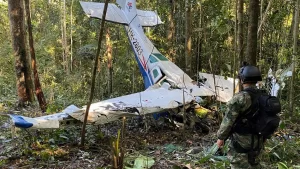
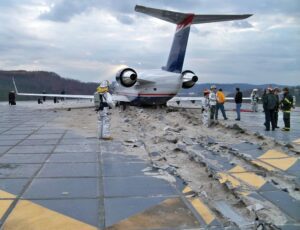 Is private aviation Overweight or Underweight? Recent stories related to the losses over at Wheels Up has made me ponder this question. Wheels Up, intended to be the next success story following Kenny Dichter’s triumphs in the private aircraft charter industry, the company took an unexpected turn as he steps down amidst mounting losses and a plummeting stock value. The company has struggled to overcome its substantial losses, which amounted to an astonishing $555 million last year. While the company has expressed its ability to mitigate these losses next year, Wall Street has already rendered its opinion and the stock, listed on the New York Stock Exchange, dropped from its initial offering price of approximately $10 in July 2021 to about 25 cents at the most recent evaluations. To prevent delisting from the Exchange, a proposal for a reverse stock split has been put forth – a clear warning sign of failure. Forced to leverage the planes it owns, Wheels Up managed to accumulate a substantial cash reserve of $585 million by the end of 2022, but this amount diminished to $363 million by the end of March, and at the current burn rate of expenditure, the remaining cash reserves might only last until the end of this summer. Also keep in mind those losses include over $76 million taken in PPP loans!
Is private aviation Overweight or Underweight? Recent stories related to the losses over at Wheels Up has made me ponder this question. Wheels Up, intended to be the next success story following Kenny Dichter’s triumphs in the private aircraft charter industry, the company took an unexpected turn as he steps down amidst mounting losses and a plummeting stock value. The company has struggled to overcome its substantial losses, which amounted to an astonishing $555 million last year. While the company has expressed its ability to mitigate these losses next year, Wall Street has already rendered its opinion and the stock, listed on the New York Stock Exchange, dropped from its initial offering price of approximately $10 in July 2021 to about 25 cents at the most recent evaluations. To prevent delisting from the Exchange, a proposal for a reverse stock split has been put forth – a clear warning sign of failure. Forced to leverage the planes it owns, Wheels Up managed to accumulate a substantial cash reserve of $585 million by the end of 2022, but this amount diminished to $363 million by the end of March, and at the current burn rate of expenditure, the remaining cash reserves might only last until the end of this summer. Also keep in mind those losses include over $76 million taken in PPP loans! EBACE stands for the European Business Aviation Convention & Exhibition. It is an annual event held in Geneva, Switzerland that serves as a meeting place for leaders in the business aviation industry in Europe and beyond. The event provides a forum for manufacturers, suppliers, and service providers to showcase their products and services, network with industry peers, and discuss the latest trends and developments in the field of business aviation. EBACE features exhibits of aircraft, avionics, engines, and other related products and services. In addition, the event includes educational sessions, keynote speeches, and other presentations focused on business aviation topics such as safety, sustainability, and regulatory issues. EBACE is jointly hosted by the National Business Aviation Association (NBAA) and the European Business Aviation Association (EBAA). The event typically attracts thousands of attendees from around the world and is considered one of the premier events in the business aviation industry.
EBACE stands for the European Business Aviation Convention & Exhibition. It is an annual event held in Geneva, Switzerland that serves as a meeting place for leaders in the business aviation industry in Europe and beyond. The event provides a forum for manufacturers, suppliers, and service providers to showcase their products and services, network with industry peers, and discuss the latest trends and developments in the field of business aviation. EBACE features exhibits of aircraft, avionics, engines, and other related products and services. In addition, the event includes educational sessions, keynote speeches, and other presentations focused on business aviation topics such as safety, sustainability, and regulatory issues. EBACE is jointly hosted by the National Business Aviation Association (NBAA) and the European Business Aviation Association (EBAA). The event typically attracts thousands of attendees from around the world and is considered one of the premier events in the business aviation industry.